Bhapa Pitha could easily be called the “king” of pithas. If there was a video game about fighting pithas, Bhapa Pitha would be the final boss. No I’m not saying this because I hate Bhapa Pitha. Nor is it evil or faul or any other manner of negative association. Bhapa Pitha is as pure and sweet as it comes but I just feel this threatening and commanding aura. Bhapa Pitha demands respect. Whoever you are, you must look up to Bhapa Pitha, there is no way around it.
Why am I hyping up Bhapa Pitha like that? Well because as a Bangladeshi it’s not something you just eat. It is really a journey full of emotions, memory, and the actual struggle of eating the Pitha. But before I explain the wonder that is Bhapa Pitha, I want to clarify that the Google search result calling Bhapa Pitha a type of rice cake is completely unjust. The translation for Pitha is “cake” but cakes do not taste anything like pithas. And there is such a wide variety of pithas out there that they cannot fall under just the term “cake”. Bhapa Pitha might be closer to a cake than most other pithas but still calling it a cake does not justify the dish.
I am not sure about what terms and conditions a food item must meet to be called a “Pitha.” But I can tell you why Bhapa Pitha is named Bhapa. It is because of the cooking process. The recipe requires the Pitha to be cooked in vapor/steam. And this process is called “Bhaap” in Bangla. Hence the simple name Bhapa Pitha.
Now Bhapa Pitha is the “King” of pithas in Bangladesh because it is the first thing that will come to most of our minds when we hear the word Pitha. And it’s one of the stars of the winter season. What do Bangladeshi people have for lunch during winter? Bhapa Pitha. What do Bangladeshi people talk about during winter? Bhapa Pitha. How do Bangladeshi people keep warm during winter? Still somehow Bhapa Pitha. What do Bangladeshi people wear during winter? Usually warm clothes but there is a significant number of people who cannot afford clothes or blankets. There are many NGOs out there that help the people in need and if you can, offer whatever support you can.
You may be wondering that if Bhapa Pitha is so precious then why isn’t it a whole year round thing. Well because of the special elixir that is Khejurer Gur (Date Palm Jaggery). Gur is the key ingredient for most pithas and it’s only available during the winter. Well saying only available is technically wrong but Gur is freshly available during the winter. And the higher availability leads to more pithas.
Khejurer Gur is one of my favorites. It’s not just used for Pitha, you can use it instead of sugar for tea, Payesh, rosogolla and so so much more. It surprises you with its soft and mellow sweetness. Items made with Khejurer Gur are always treated specially. Just an example, I am not a tea person. But I never say no to tea made with Khejurer Gur. So you can imagine how good the one dish, Bhapa Pitha, that mainly depends on Khejurer Gur will be.
And as I’ve already mentioned, Bhapa Pitha just is not the dish and its ingredients. The gur and Atap Rice are special ingredients, but they aren’t the only things making Bhapa Pitha special. It’s the emotion Bangladeshi people have with the dish.
I asked a few friends about their thoughts on Bhapa Pitha and almost all of them associated it with their grandmother. My friends and I grew up in the city. So during winter vacation most of us would end up visiting our grandparents who live in rural areas. Many grandparents live in cities with their families too. But regardless of where they live, what all of them share is making Bhapa Pitha for the family.
A friend specifically recalled sitting next to the oven for warmth while the Pitha was being prepared. The whole process of making the Pitha usually involves multiple family members. Someone is managing the rice, someone is heating the oven, someone is just bossing around, but everyone is there. So it’s not just a Pitha for us, it’s the love of our families as well.
Ingredients
- 2 cups Rice flour
- 1/2 cup Warm water
- 1/2 cup Grated coconut
- 1/2 cup Crushed Jaggery
- Salt as per taste
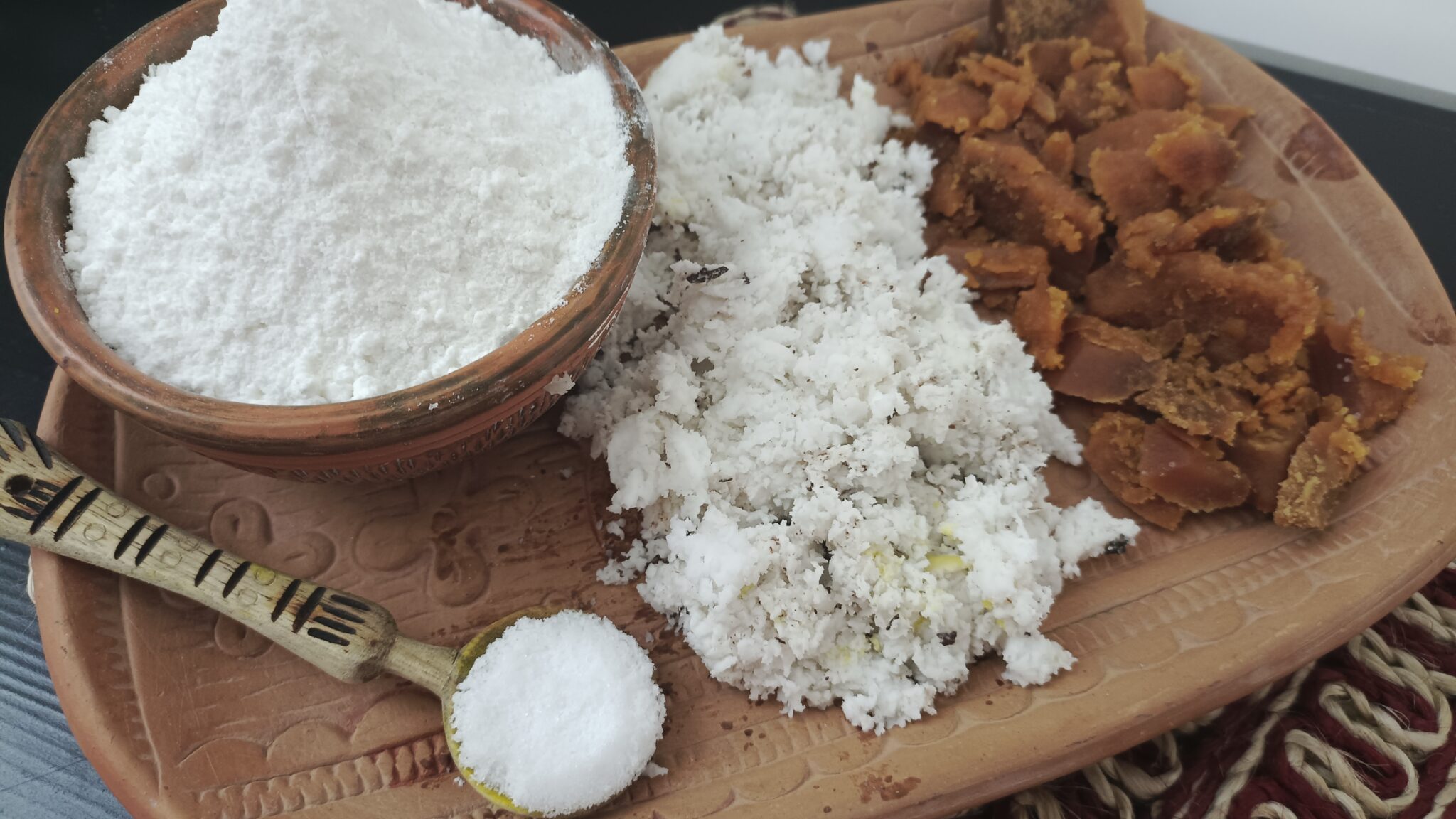
Instructions
- Take a bowl and add rice flour and salt. Mix it properly. Add warm water and stir it. Make sure that the flour is moist. Take a stainer. Stir the flour with this stainer.
- Take a small round shaped bowl. Use it as a mold of vapa pitha. Add some rice flour to the bowl as the first layer. Then add a grated coconut layer, then again a rice flour layer, then a layer of crushed jaggery, then a final layer of rice flour.
- Soak a fresh piece of cloth in water and squeeze out the extra water. Wrap the mold with this piece of cloth.
- Take a Vapa pitha-making pan (Pan with holes on the lid) and fill 3/4 portion of it with water. Turn on the flame and boil the water.
- Take the wrapped mold and set it in the hole of the pan and flip it carefully. Then remove the mold from the pitha and cover it with a lid for 5 minutes.
- After 5 minutes, take out the pitha from the cloth and serve it.
Nutrition
One Comment
Comments are closed.

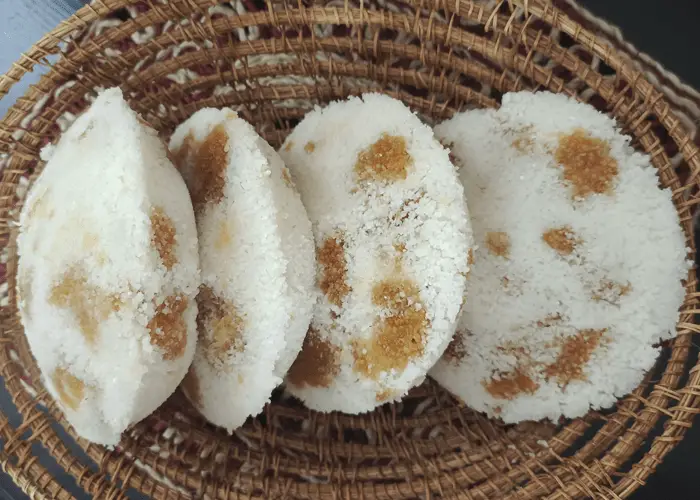
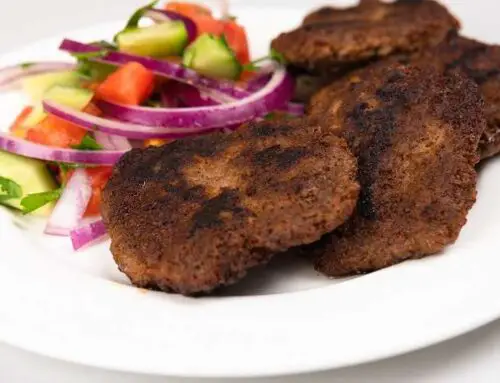
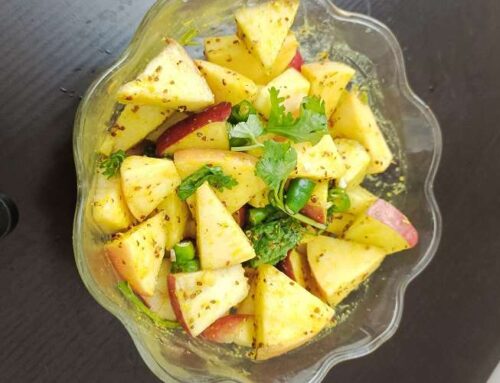
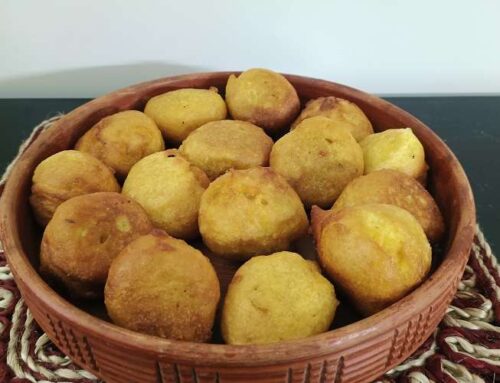
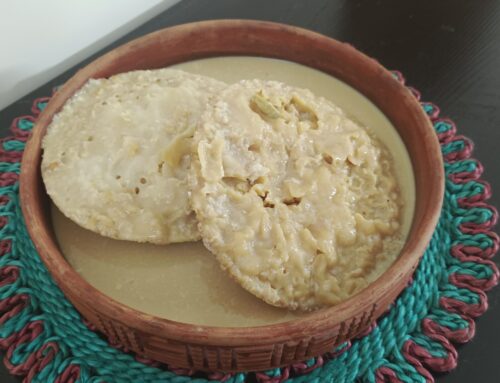

love it